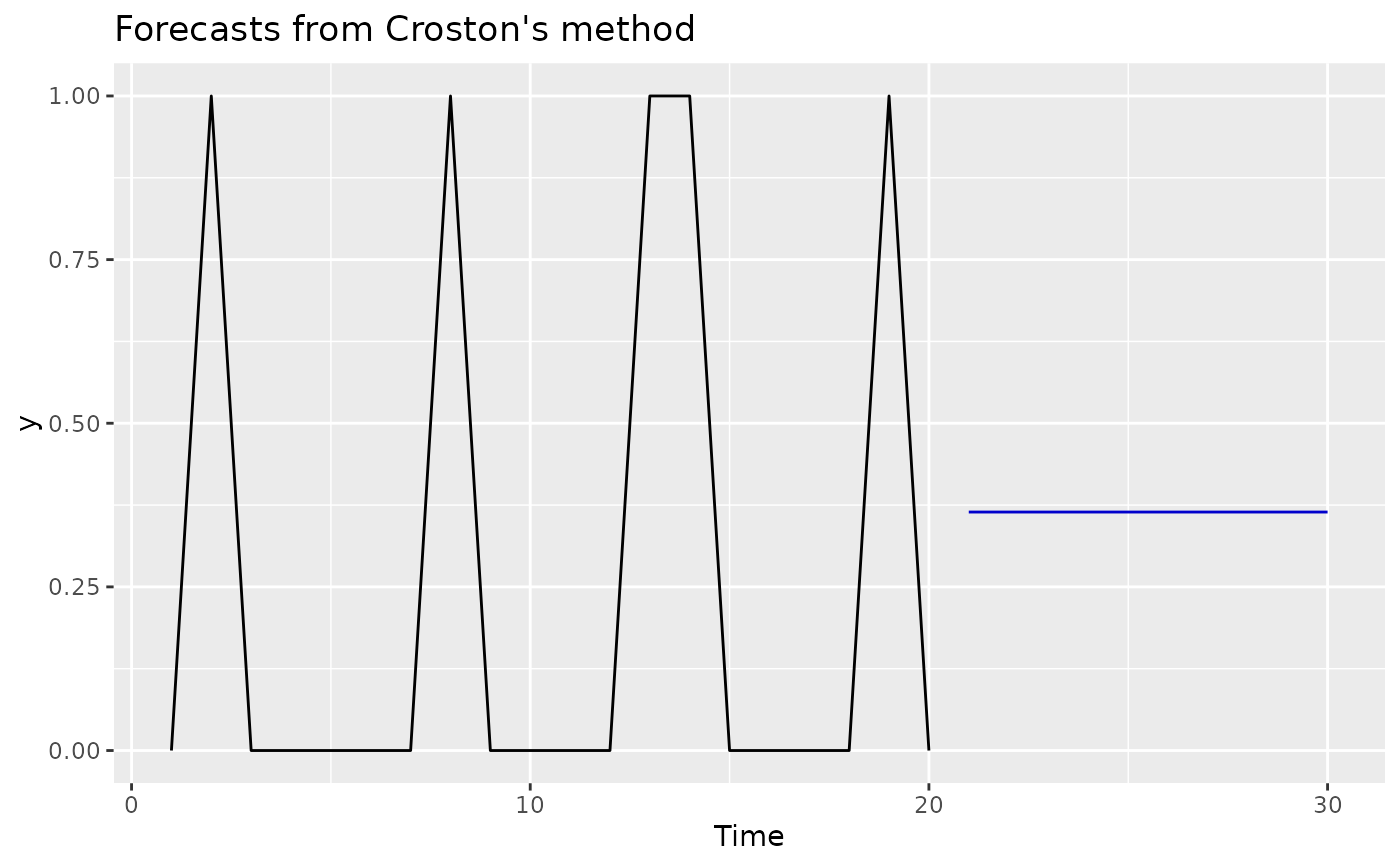Based on Croston's (1972) method for intermittent demand forecasting, also described in Shenstone and Hyndman (2005). Croston's method involves using simple exponential smoothing (SES) on the non-zero elements of the time series and a separate application of SES to the times between non-zero elements of the time series. Returns a model object that can be used to generate forecasts using Croston's method for intermittent demand time series. It isn't a true statistical model in that it doesn't describe a data generating process that would lead to the forecasts produced using Croston's method.
Usage
croston_model(y, alpha = 0.1, type = c("croston", "sba", "sbj"))Arguments
- y
a numeric vector or univariate time series of class
ts- alpha
Value of alpha. Default value is 0.1.
- type
Which variant of Croston's method to use. Defaults to
"croston"for Croston's method, but can also be set to"sba"for the Syntetos-Boylan approximation, and"sbj"for the Shale-Boylan-Johnston method.
Details
Note that prediction intervals are not computed as Croston's method has no underlying stochastic model.
There are two variant methods available which apply multiplicative correction factors
to the forecasts that result from the original Croston's method. For the
Syntetos-Boylan approximation (type = "sba"), this factor is \(1 - \alpha / 2\),
and for the Shale-Boylan-Johnston method (type = "sbj"), this factor is
\(1 - \alpha / (2 - \alpha)\), where \(\alpha\) is the smoothing parameter for
the interval SES application.
References
Croston, J. (1972) "Forecasting and stock control for intermittent demands", Operational Research Quarterly, 23(3), 289-303.
Shale, E.A., Boylan, J.E., & Johnston, F.R. (2006). Forecasting for intermittent demand: the estimation of an unbiased average. Journal of the Operational Research Society, 57(5), 588-592.
Shenstone, L., and Hyndman, R.J. (2005) "Stochastic models underlying Croston's method for intermittent demand forecasting". Journal of Forecasting, 24, 389-402.
Syntetos A.A., Boylan J.E. (2001). On the bias of intermittent demand estimates. International Journal of Production Economics, 71, 457–466.

